The very best lenses for my personal favorite compact camera system for astrophotography: the Fuji X-Series.
This is a list of the highest scoring lenses for untracked nightscape photography and astrophotography. The score is a direct representation of light gathering capabilities based on the formula:
Score = (aperture area) × (angular area) × (suggested shutter speed)
Where the shutter speed is the longest suggested shutter speed in seconds based on the “500 Rule” (500/focal length). Aperture area is the surface area calculation of the clear aperture of the lens and the angular area is the angular field of view in square radians. This score is a mathematical calculation based purely on some simple physics. It doesn’t account for other considerations like the lens’s build quality or optical aberrations but it’s a good gauge of overall light gathering capability. You can also see the complete list of scores here, complete with calculations and further explanation.
All of the lenses listed here are my personal suggestions for photographers looking to get the absolute best astrophotography results with the Fuji X-Series cameras like the X-Pro1, X-E1, X-E2, X-M1, X-A1 and X-T1. These are the lenses that I use for my X-T1 and are the ones I would recommend most. Some of these lenses are manual focus lenses by Rokinon. If you’re willing to learn how to use manual focus, Rokinon lenses are spectacular performers. Note that I’m excluding from this list some of the larger Rokinon lenses like the Rokinon 10mm f/2.8, Rokinon 16mm f/2.0 and Rokinon 14mm f/2.8 even though they are excellent for astrophotography and are all available for the Fuji X mount. The reason they aren’t recommended below is because they are not dedicated mirrorless designs and so they tend to be rather large and heavy for a compact system camera. All of the lenses listed below are designed specifically for mirrorless cameras so they are more compact and balanced on small camera bodies like the Fuji X series.
If you would like to know more about the thoughts that went into creating this list, please read my article on how to pick a lens for Milky Way photography.
X Mount
Fujifilm XF 23mm f/1.4 R ( Amazon / B&H )
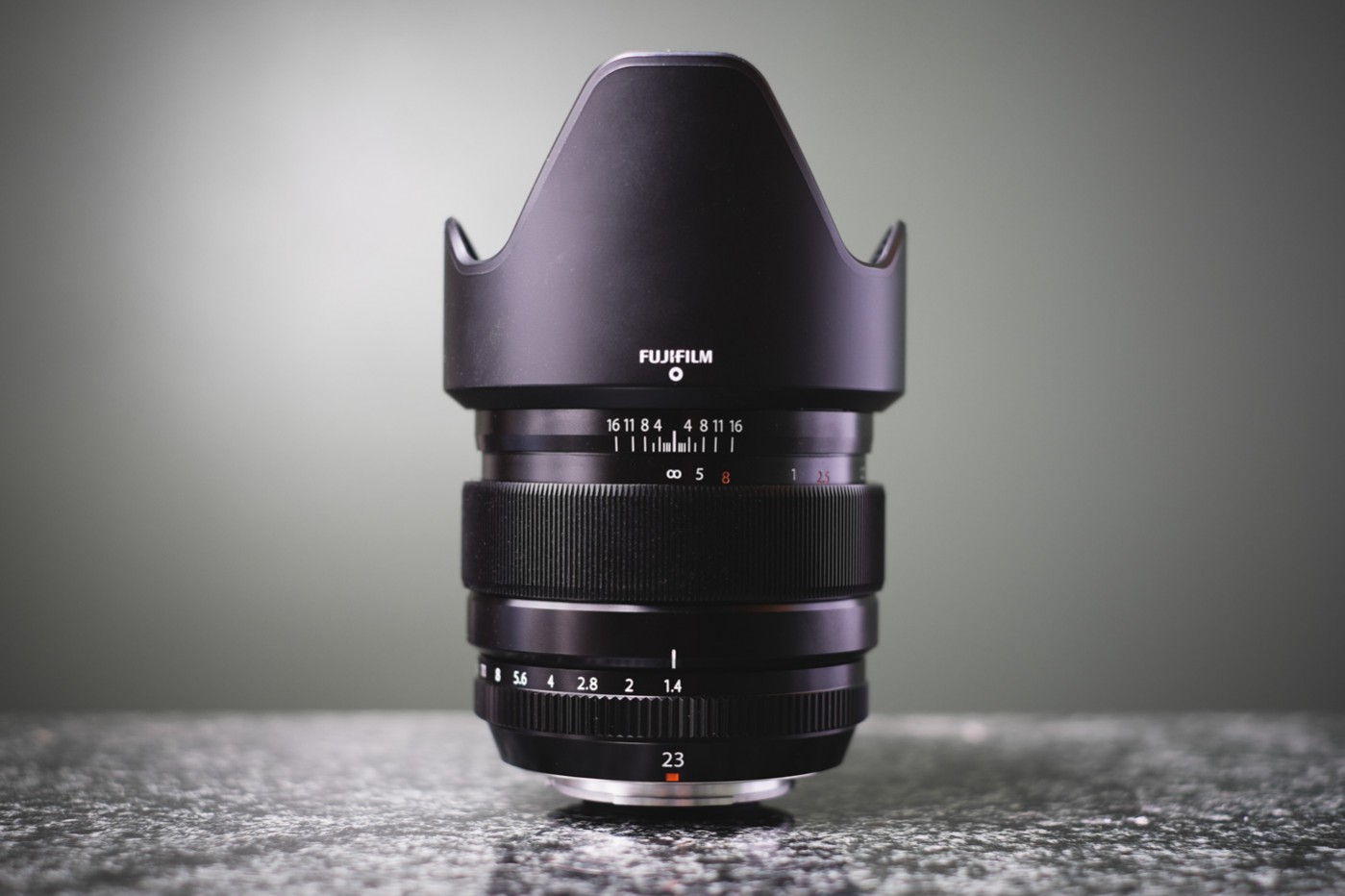
- Standard wide angle makes for a slightly tighter crop that’s good for panorama stitches. Very fast autofocus for regular shooting and a useful and an accurate manual focusing distance scale makes focusing on the stars easy. However, some coma aberration at the extreme corners at f/1.4 keep this lens from being perfect for astrophotography. Stop it down to f/2.0 for the best results.
- Score: 2967
- Sample Image:
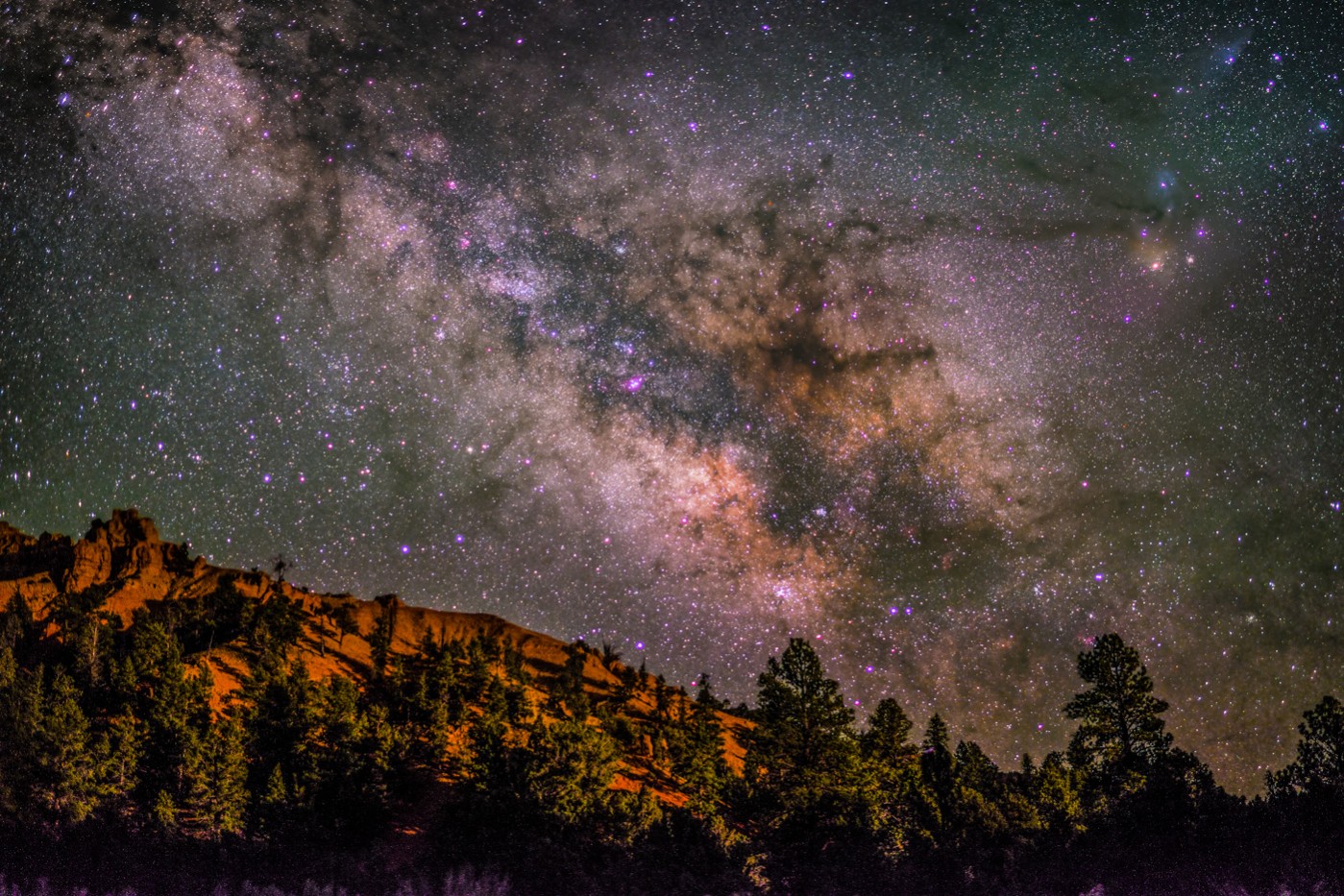
Rokinon 12mm f/2.0 NCS CS ( Amazon / B&H )
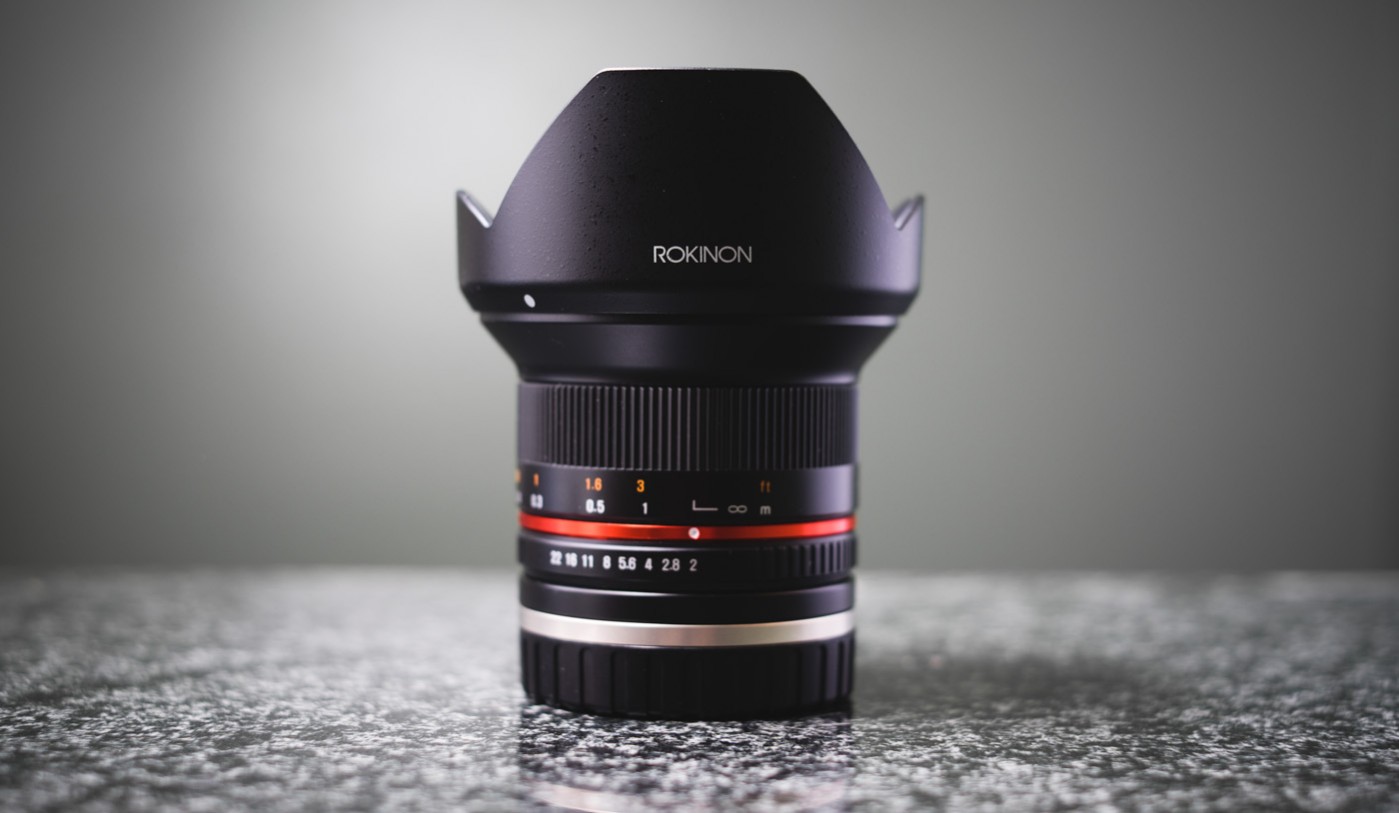
- Read the full review of the Rokinon 12mm f/2.0 NCS CS lens.
- Probably the best all around lens for astrophotography on a mirrorless system because it has the best combination of super-wide field of view and large aperture. It’s coma performance is very good, even at f/2.0. Manual focus.
- Score: 2176
- Sample Image:
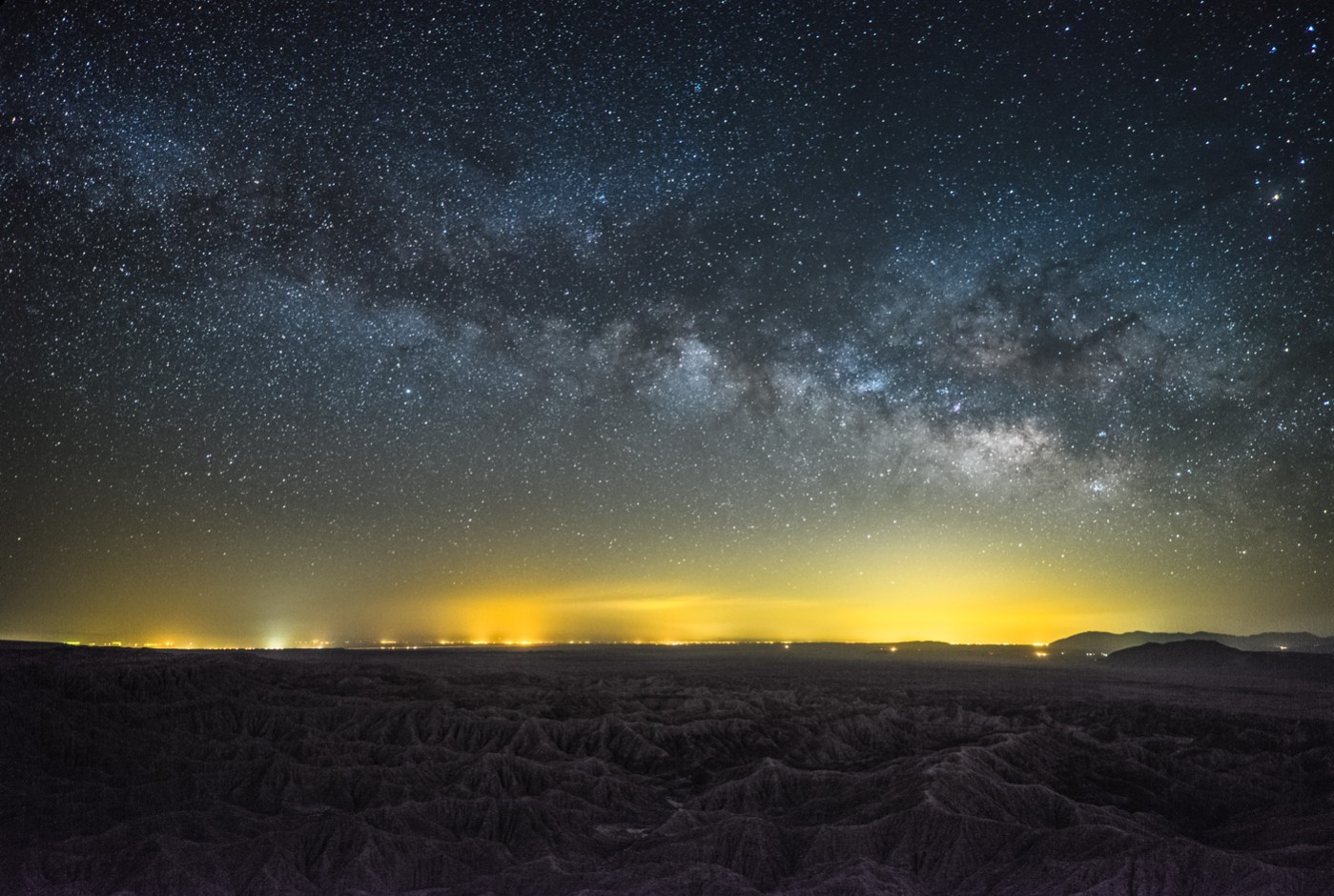
Fujifilm XF 18mm f/2.0 R ( Amazon / B&H )
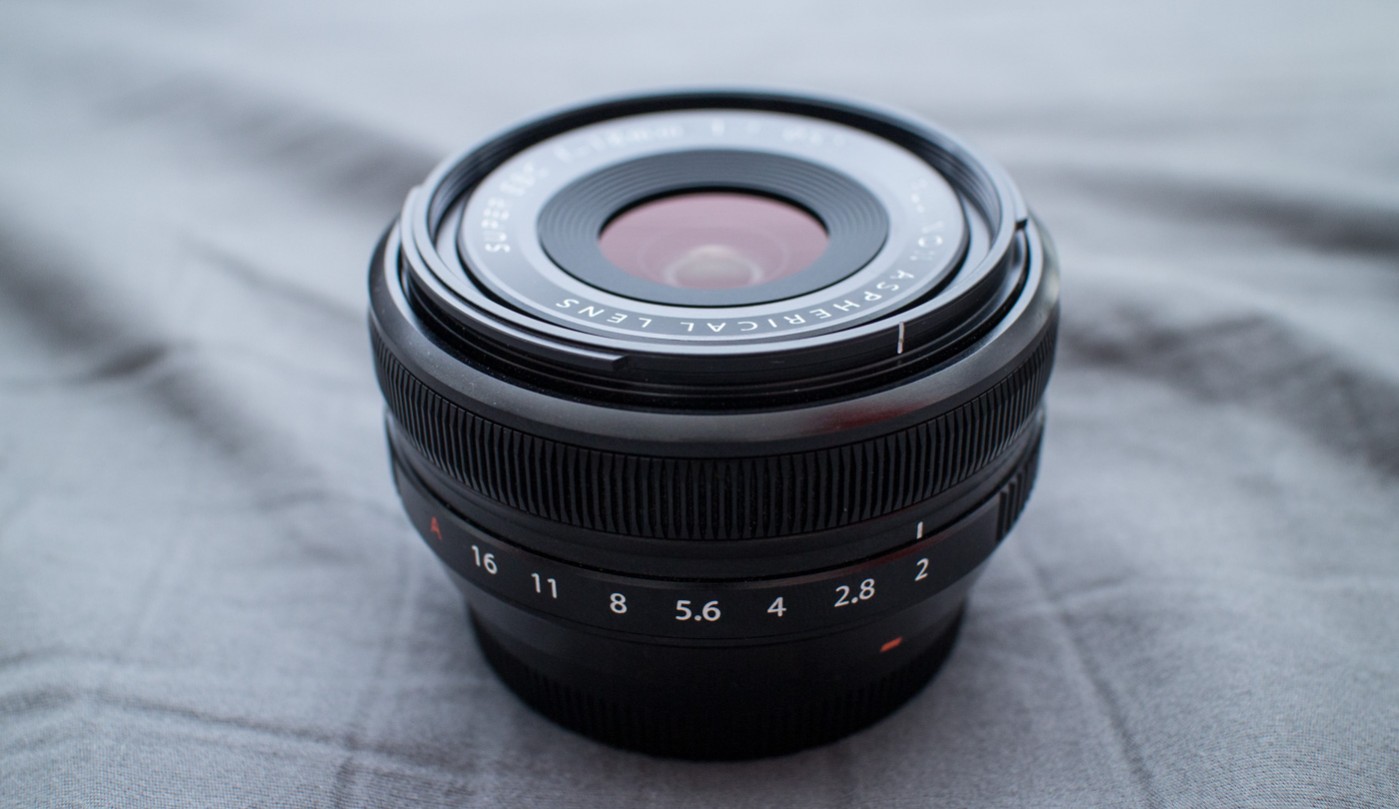
- Extremely compact autofocus lens with a wide field of view. Nearly a pancake lens which makes the camera nice and light. This lens surprised me because it performs pretty well wide-open at f/2.0 and is one of the cheaper lenses available for the X-Series cameras. Great lightweight walkaround lens that also makes great astrophotos.
- Score: 1505

Rokinon 8mm f/2.8 UMC Fisheye II ( Amazon / B&H )
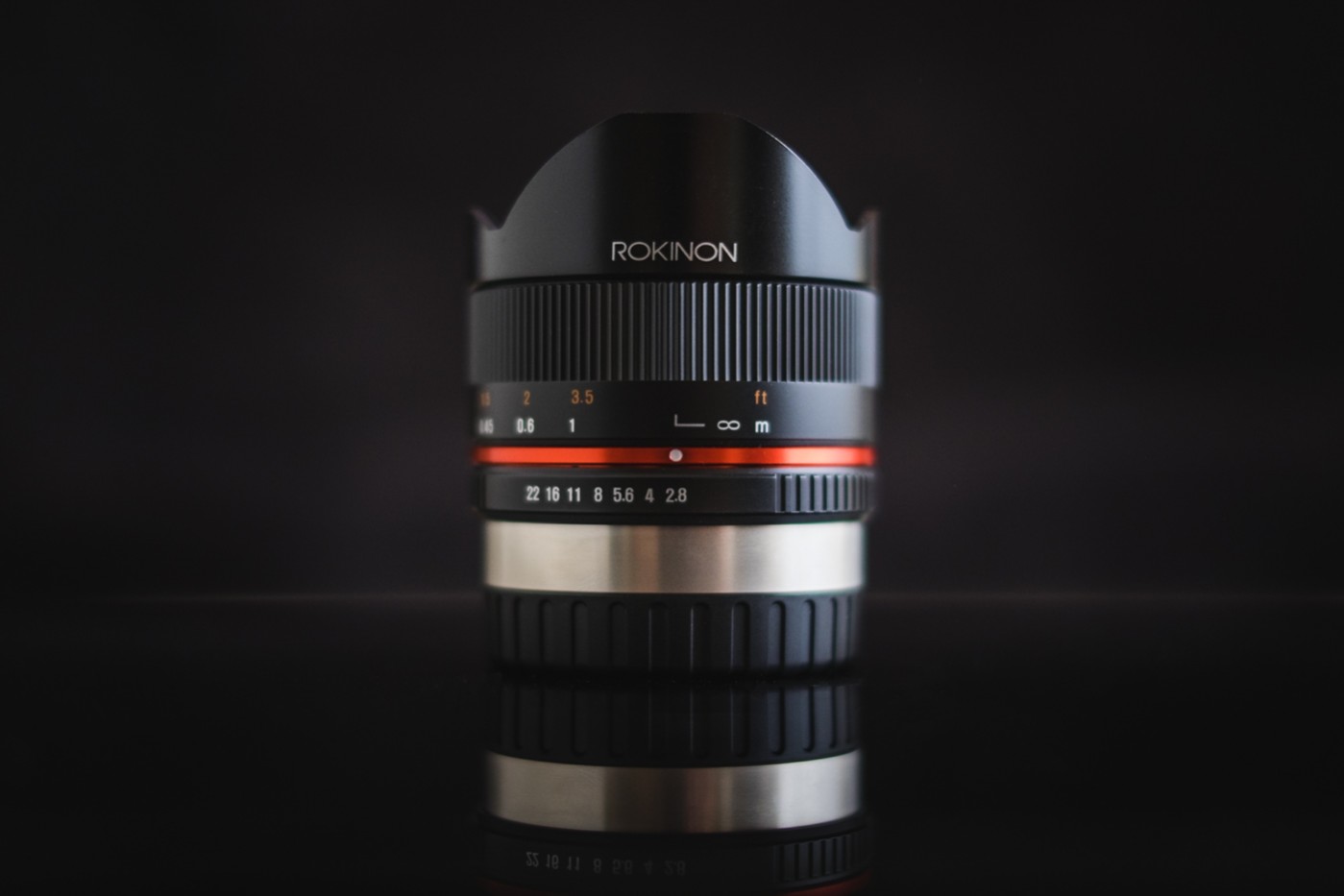
- Read the full review of the Rokinon 8mm f/2.8 UMC Fisheye II Lens.
- Ultra-wide angle fisheye that is both fast and extremely wide. Fisheye distortion requires you to keep the horizon in the center of the frame for a non-distorted look but the extreme field of view allows for exposure times that exceed 30 seconds without star trails. While often considered a novelty lens, a fisheye can provide some amazing views of the Milky Way. In some careful and patient hands, the results can be spectacular, especially when defished. Check out my article on how to defish photographs for spectacular results.
- Score: 1237
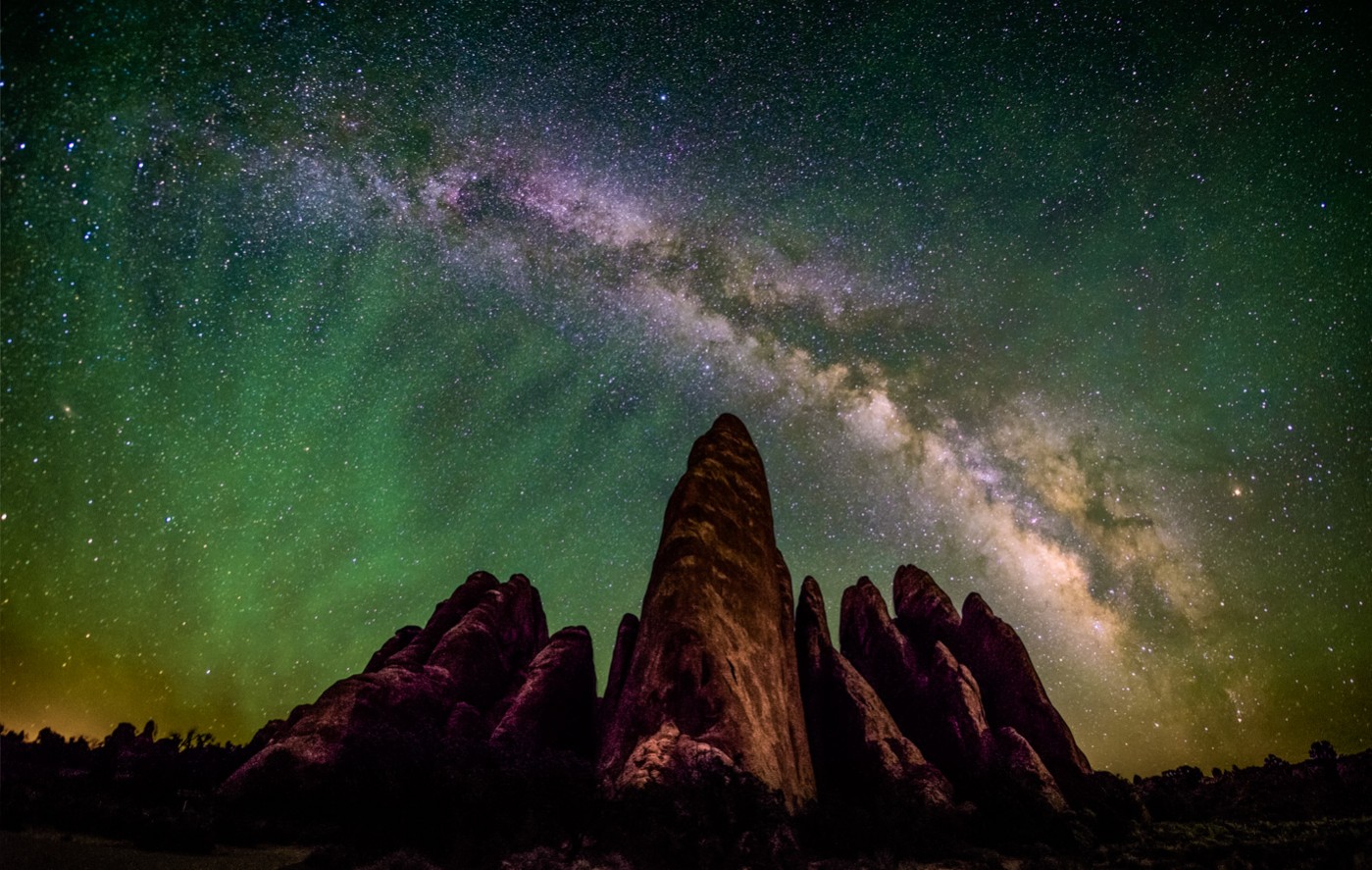
Fujifilm XF 14mm f/2.8 R ( Amazon / B&H )
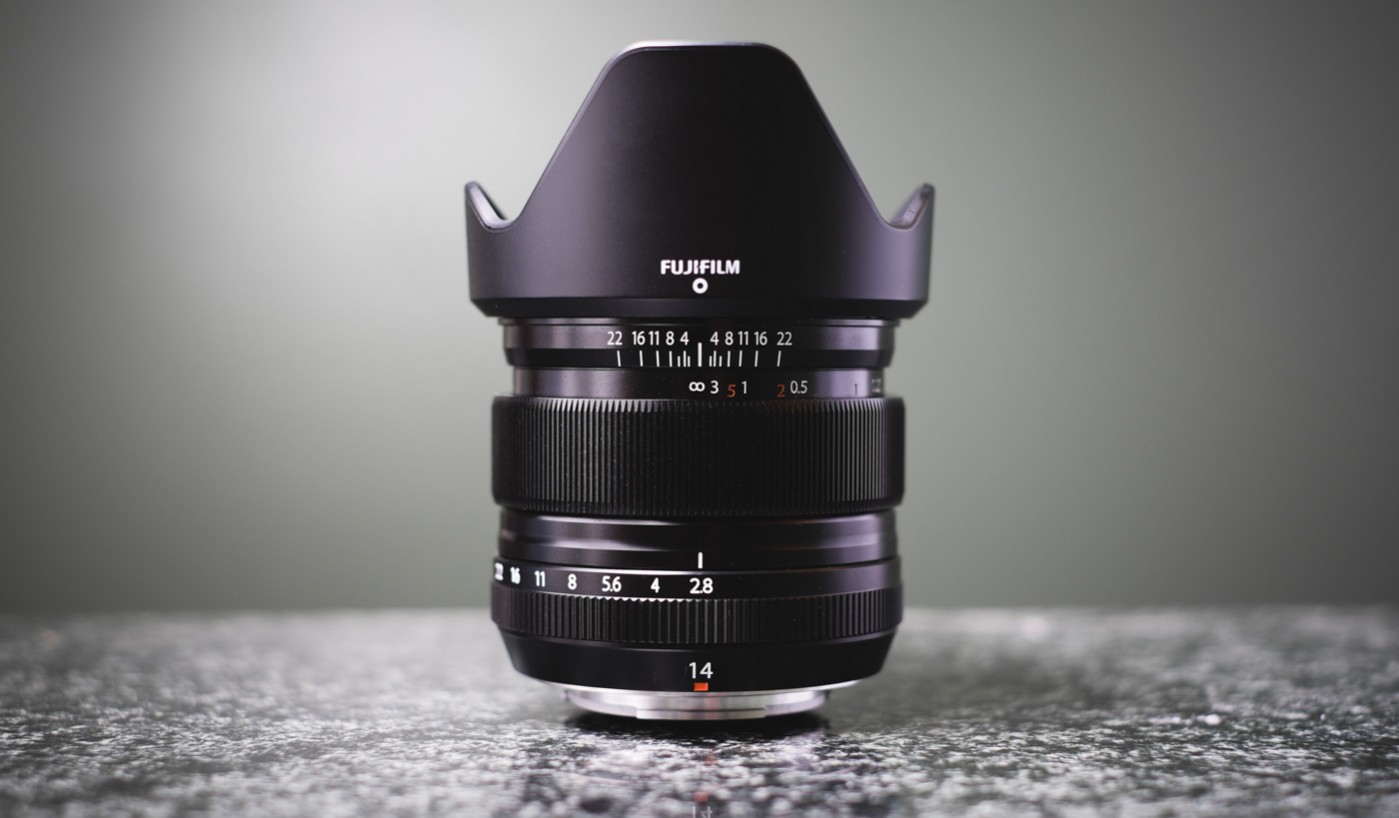
- Super-wide angle field of view with excellent sharpness wide open at f/2.8. Autofocus with a manual focus clutch mechanism similar to the XF 23mm f/1.4 R makes this lens great to use for regular shooting too. The manual focusing distance scale is accurate and makes manual focus very nice. It also has no coma aberration, even wide open and so it performs very well for astrophotography.
- Score: 1032
- Sample Image:
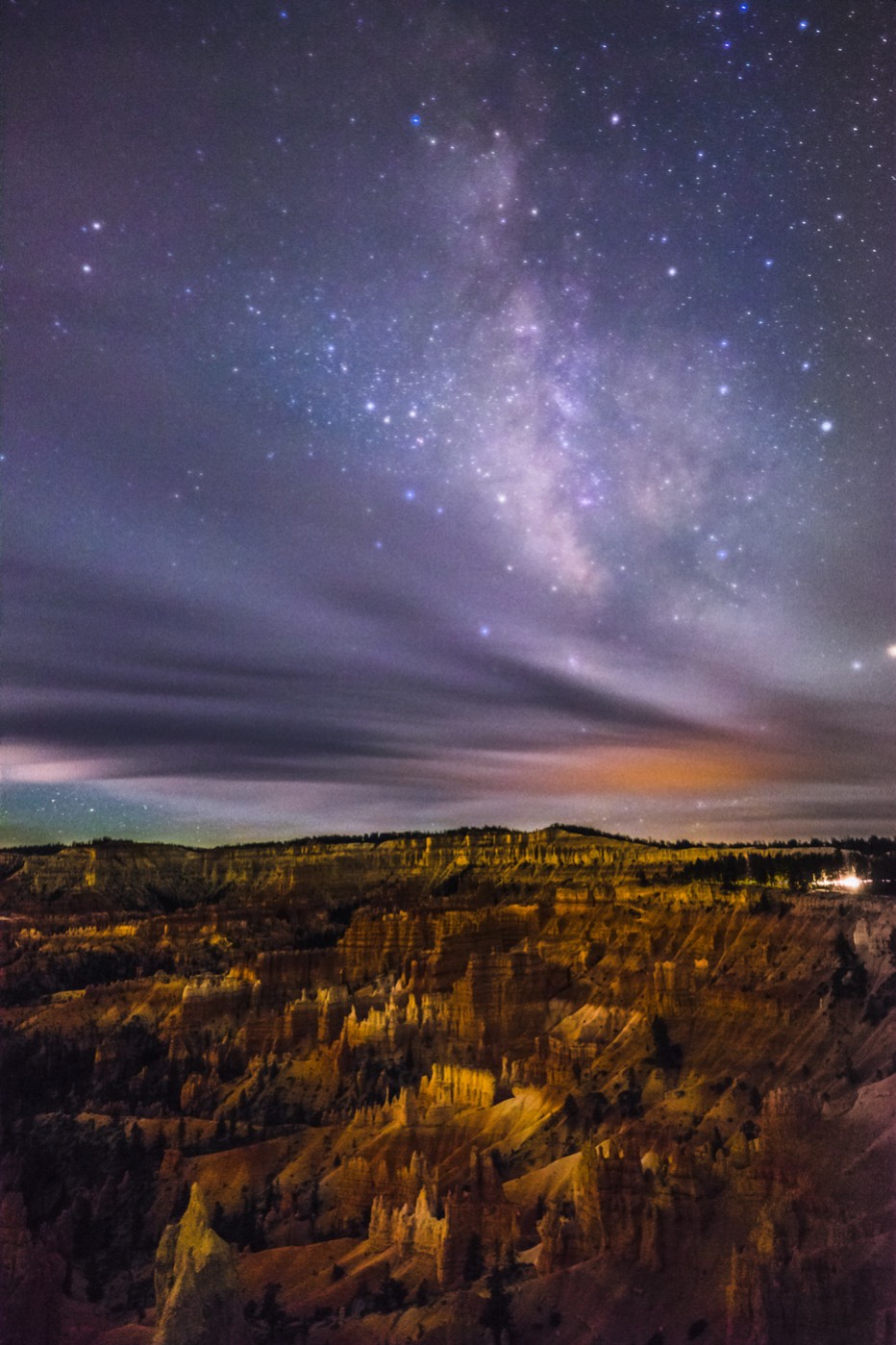
For another good comparison between various Fujifilm lenses for astrophotography, check out Jason Pitcher’s blog post where he tests out the Rokinon 12mm/2, Fujifilm 16mm/1.4, 18mm/2, 23mm/1.4, and 35mm/1.4 in a direct side-by-side comparison!
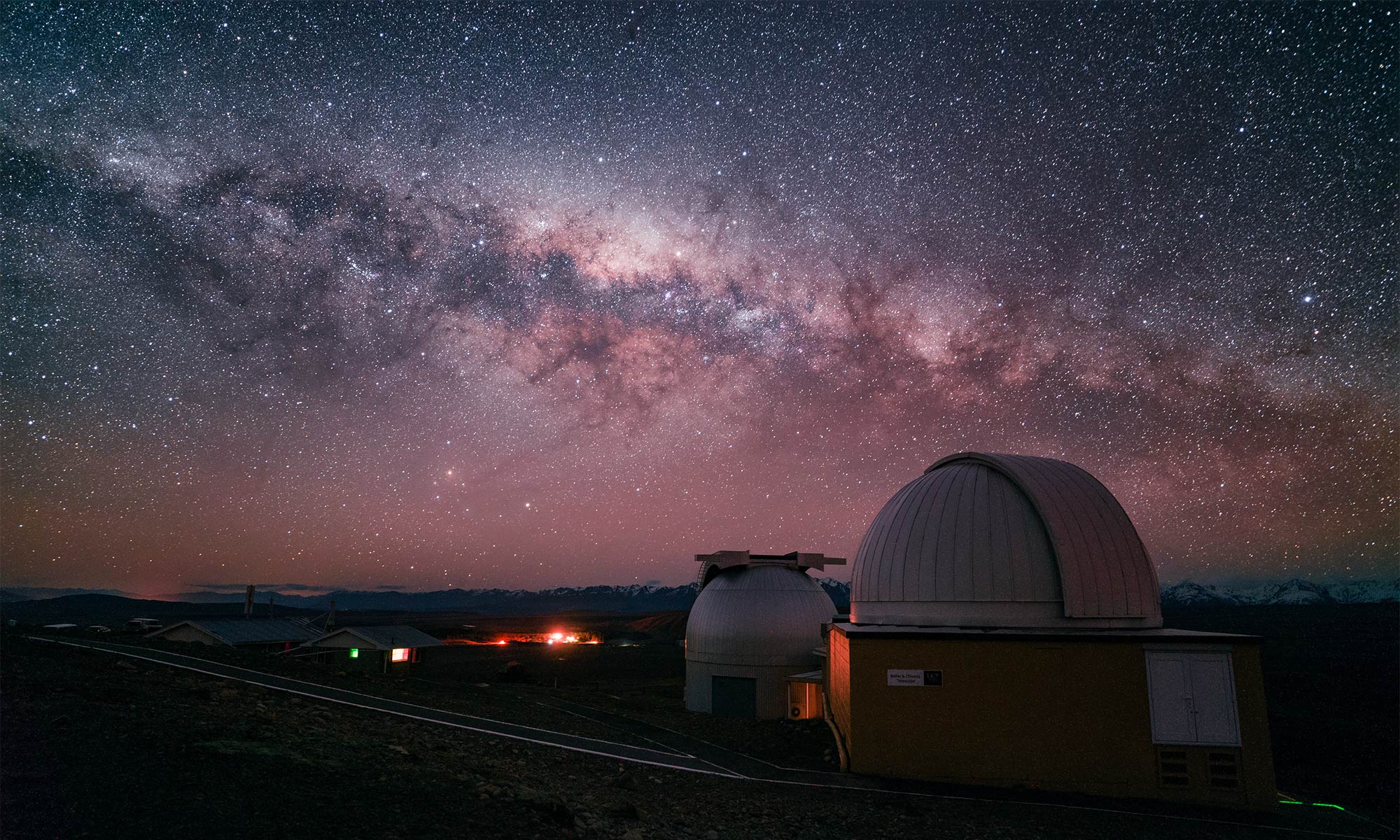
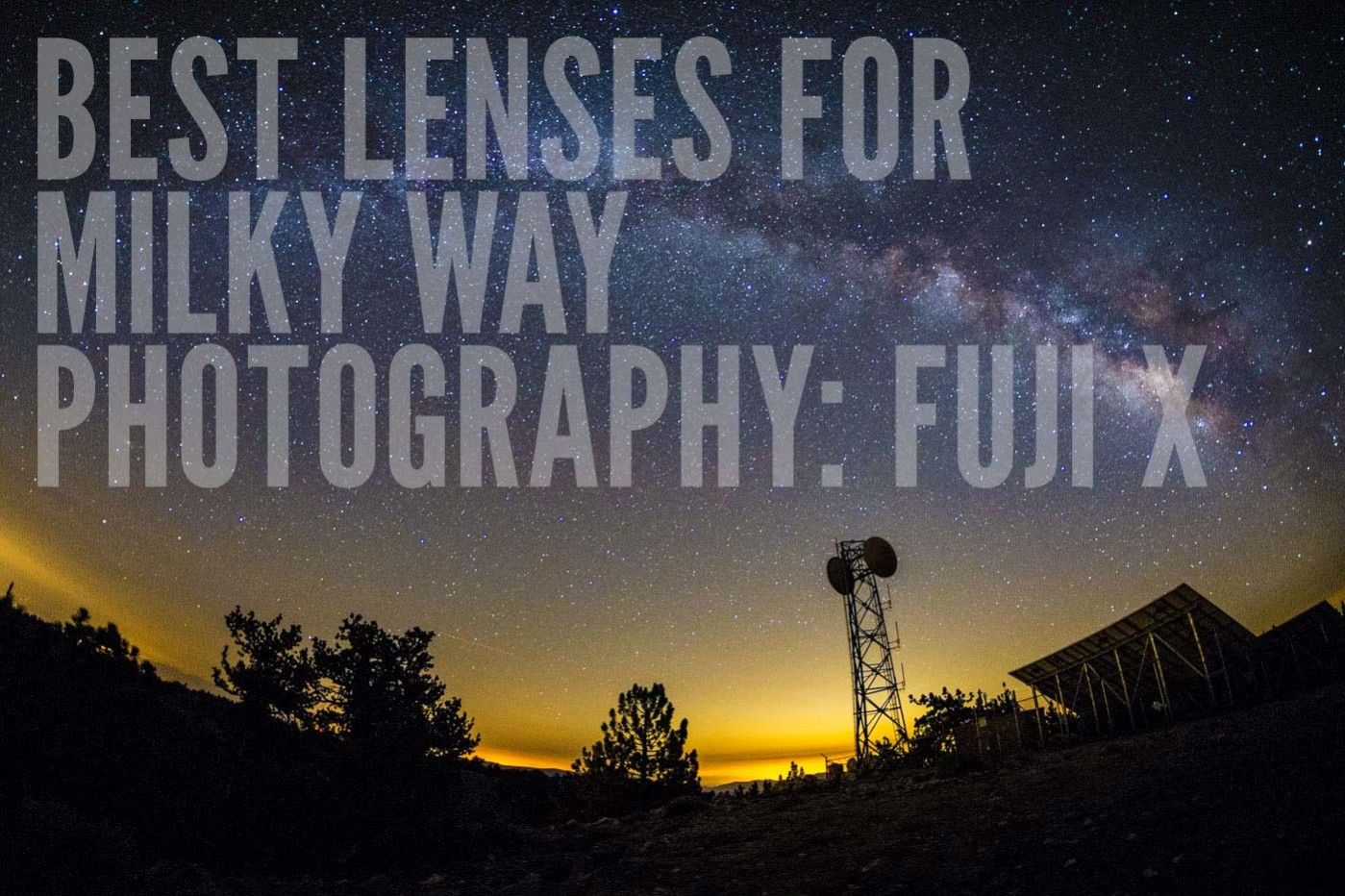
Thank for all your informations ,it was very helpfull for me !!!
finally i got a samyang 12mm f2 for astro and did he first try in france :
https://www.flickr.com/photos/mahon91/16358391141/in/photostream/lightbox/
Mathieu.
Great results Mathieu!
Wow, this is a great photo. I am looking at buying this Samyang lens now and your photo helps with my decision. Thanks.
Ian, I see that B&H sells a
Samyang 16mm f/2.0 ED AS UMC CS Lens for Fujifilm X Mount Cameras.
Might you have an thoughts (or experiences) with using this lens with a Fuji X digital camera for night photos? Also, I wonder how you suspect it might compare with the Fuji 18mm lens.
I didn’t list that lens here because it’s rather large (it’s an adapted SLR lens design. I have experience with the 18mm/2 and it’s pretty darn good for night photography; it would be my preference for the X cameras until Fuji releases their 16mm/1.4
First of all, great article!
I did some aurora shooting last oktober in Iceland with the X-T1, Samyang 12mm f/2 and Fuji 10-24 f/4. Both excelent performers for this kind of photography. With the 10-24 you need a strong Aurora, but you do benefit from the in camera corrections which the Samyang lacks.
Here are some examples, first one is shot with the Samyang 12mm, the second one with the Fuji 10-24.
https://farm4.staticflickr.com/3940/15302258898_4afd4a86ba_o.jpg
https://farm6.staticflickr.com/5597/15485775281_a4649368b3_o.jpg
What do you think about long exposure noise reduction? I’ve turned it off to shorten waiting time between the shots. I shoot in RAW, but is there any benefit from turning the in camera feature on when shooting RAW?
Regards,
Arnold
Netherlands
Arnold, great shots! There is a benefit to shooting with long exposure noise reduction, particularly in warm conditions. It helps remove any fixed pattern noise from warm electronics, even when shooting in RAW. Sometimes it helps, sometimes it’s not worth the wait. If it’s real cold outside I tend to leave it off.
Long Exposure noise reduction can be beneficial especially in warm conditions but I mostly shoot with it off.
Hi Ian, can I check with you if Zeiss Touit 12mm f2.8 is a good choice for astrophotography? I didn’t see you mention it in this article.
Thanks.